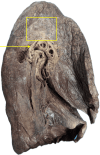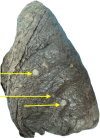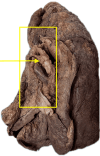Lung Pathologies and Anatomical Variations in Midwestern American Donor Bodies: Implications for Surgical Planning and Education
- PMID: 40909066
- PMCID: PMC12407152
- DOI: 10.7759/cureus.89345
Lung Pathologies and Anatomical Variations in Midwestern American Donor Bodies: Implications for Surgical Planning and Education
Abstract
Introduction: Normal anatomical variations between the right and left lungs can affect function and disease presentation; a better understanding of these variations is necessary for optimizing thoracic procedures. Therefore, the current study investigated the lung pathologies of donor bodies to enhance understanding of anatomical variations when performing surgical lung resections, lobectomies, and other thoracic procedures.
Methods: The lungs of 31 donor bodies from A.T. Still University's Gift of Body Program were analyzed for general pathologies, fissure variations, and tumor characteristics. Specifically, the 62 lungs were examined for pathological changes, completeness of pulmonary fissures, and tumor sizes. To mitigate interobserver bias, eight trained medical students and faculty members collected data using standardized protocols to ensure consistency in fissure grading and pathology identification.
Results: Pulmonary fibrosis and atelectasis were the most frequent pathologies, both of which were observed in 11 (17.7%) lungs. Lung cancer was found in eight lungs (12.9%), right heart enlargement in four (6.6%), pulmonary emphysema in four (6.6%), and bronchopneumonia in four (6.6%). Of 62 fissures, 15 (24.2%) were separable at the hilum. Although not statistically significant, a trend was observed in which lower fissure grades were associated with larger average tumor sizes. Specifically, tumors in Grade 1 lungs averaged 134.93 mm compared to 95.67 mm in Grade 2 and 108.43 mm in Grade 3 fissures. The mean (SD) diameter of tumors was 111.58 (38.48) mm. No difference in tumor diameter was found between the left and right lungs.
Conclusion: Overall, study results indicated a correlation between higher fissure grades and severe pathologies, particularly in cases with Grade 3 fissures. These findings may provide valuable insights for optimizing surgical planning in lung resections, lobectomies, and related procedures.
Keywords: lung anatomical variations; lung anatomy; lung pathology; pulmonary fissure grading; thoracic surgical planning.
Copyright © 2025, Patel et al.
Conflict of interest statement
Human subjects: All authors have confirmed that this study did not involve human participants or tissue. Animal subjects: All authors have confirmed that this study did not involve animal subjects or tissue. Conflicts of interest: In compliance with the ICMJE uniform disclosure form, all authors declare the following: Payment/services info: All authors have declared that no financial support was received from any organization for the submitted work. Financial relationships: All authors have declared that they have no financial relationships at present or within the previous three years with any organizations that might have an interest in the submitted work. Other relationships: All authors have declared that there are no other relationships or activities that could appear to have influenced the submitted work.
Figures




References
-
- Katrivesis K, Elia J, Etiz B, Cooley-Rieders K, Hosseinian S, Melucci S. Mechanical Ventilation Amid the COVID-19 Pandemic. Cham, Switzerland: Springer; 2022. An overview of lung anatomy and physiology.
-
- Downey RP, Samra NS. Treasure Island, FL: StatPearls Publishing; 2023. Anatomy, Thorax, Tracheobronchial Tree. - PubMed
LinkOut - more resources
Full Text Sources
